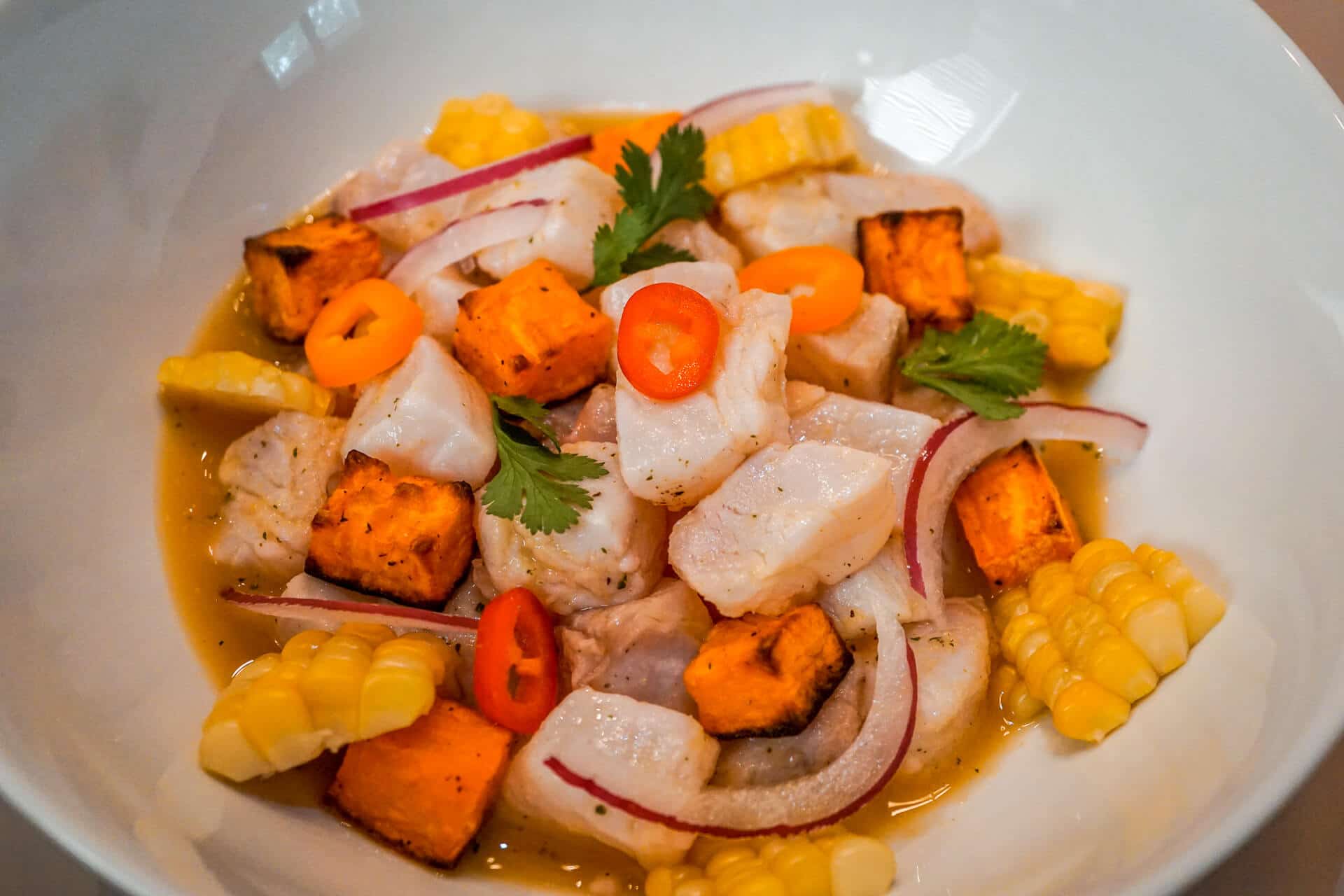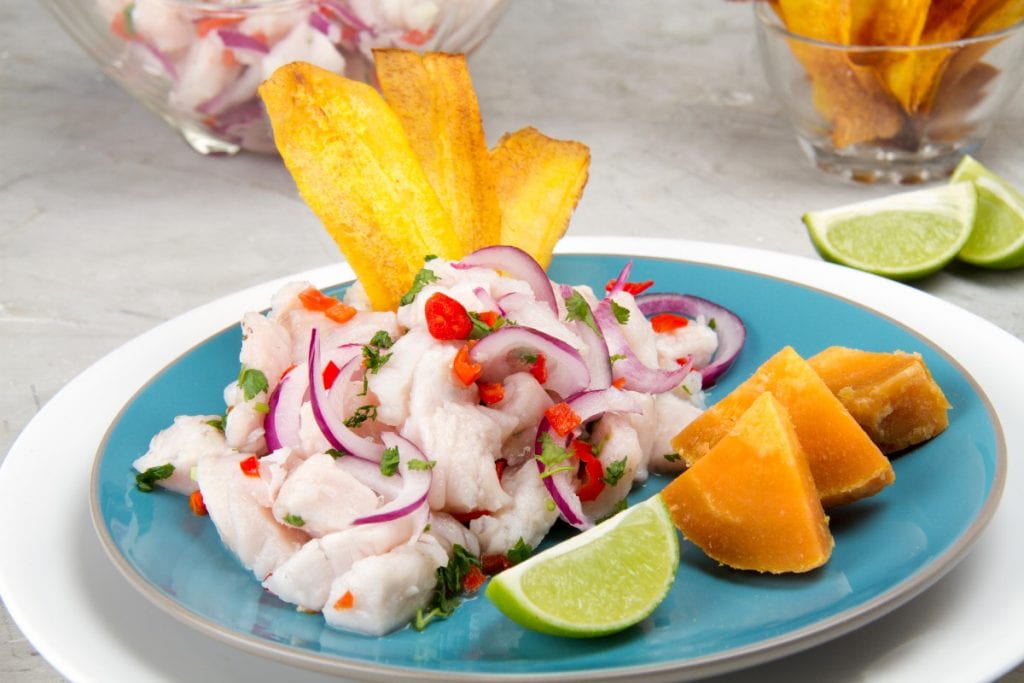Ceviche is the most famous Peruvian dish. This popular seafood dish claims origins in Lima, Peru but is found in many coastal areas throughout Latin America such as Ecuador, Chile, Mexico, and Colombia. Ceviche is also known as cebiche and sometimes spelled seviche. In its simplest form Ceviche consists of raw fish and fresh lime juice with some chili, or hot peppers.
We’re talking about classic Ceviche (Peru’s national dish) or Ceviche Peruano in particular, but the overall cooking methods, preparation, and ingredients are similar to other forms of this dish such as Mexican ceviche or ceviche with shrimp, prawns, octopus, or ahi tuna.

Preparation times fish marination/cooking
- 0-1 minute: the fish will be still pretty raw and will have a strong ‘fish’ smell and flavor.
- 1-2 minutes: Only minor changes in the texture of the fish. Some infusion of lime flavor.
- 2-3 minutes: This is a favourite length of time for cooking for many chefs. Experiment with this as for many people it’s still not quite enough.
- 3-10 minutes: The amount of time I prefer to marinate fish for ceviche. Not overcooked, not raw.
- 10-15 minutes: Depending on the fish, this can also be a good amount of time for marination.
- 15-60 minutes: For many chefs this is overkill. For some chefs, this is not enough, so try two variations!
Experiment with preparation times, and always use the freshest produce. Ice the fish and use chopped red onion. Serve with a pisco sour to get the digestive juices flowing!
As this is a raw food dish the ‘shelf life’ of ceviche is quite short. Don’t store the dish for any length of time. An hour after adding lime and the texture of the fish will have changed quite a lot. Some chefs leave the fish to marinate for hours but once you add the other ingredients it’s not wise to keep the dish too long.
For those concerned about food safety, serve the dish at room temperature for the best taste and the safest in terms of food hygiene.
Want to learn how to make Ceviche? Read our recipe for authentic Peruvian Ceviche
The best ceviches recipes are the ones that most appeal to your taste. When in Lima, try as many different variations as you can and try to perfect the one you like the most at home.
As with any recipe, you can alter your ceviche based on your own preferences. If you don’t want it spicy at all, just leave out the aji pepper. Substitute your favorite pepper in its place, instead. The same goes for fresh herbs and seasonings. If you don’t want cilantro, go for parsley, rosemary, fennel, bay leaves or thyme. Any of these herbs go well with fish recipes.
Authentic Peruvian Ceviche Ingredients
Although ceviche recipes spread to countries all over the Caribbean, Peru lays claim to the original. Fans of ceviche are familiar with the name Gaston Acurio. He’s the Peruvian chef who made this dish famous by touting its traditional flavours. He also created several varieties of ceviche in his restaurants in Peru and all over the New World.
Without Acurio, ceviche would probably remain a regional dish to South America. Acurio says there are three ingredients you must have in this Peruvian delicacy.
- The first us you need is raw fish. Your favorite type of fish will work, but traditional dishes contain sea bass or shark. Ancient Peruvians caught these fish from the ocean and then served them as ceviche after the salt brine-cured the meat after several hours. Once you have the raw fish, you chop it into tiny chunks before adding liquid.
- The next ingredient you need is some kind of citrus juice. The traditional ceviche recipe uses fresh lime juice (or lemon juice) ever since the Spanish imported the lime around 400 years ago. Until the limes came around, ceviche consisted of salt, raw fish, and chili peppers.
- The third ingredient you need is an aji (pronounced “ah-hee”) chili pepper. These yellow and orange-coloured peppers grow all over Peru. In terms of hotness, the most popular kind of yellow aji chilis are 40,000 to 50,000 on the Scoville scale. For a comparison, jalapeño peppers are 2,500 to 8,000 Scovilles. Several varieties of aji grow all over Peru, and they have varying degrees of hotness. They’re also a great source of vitamin C.

What is Ceviche?
FAQ
What is ceviche usually made of?
Is ceviche completely raw?
What is so special about ceviche?
Is ceviche healthy or unhealthy?
